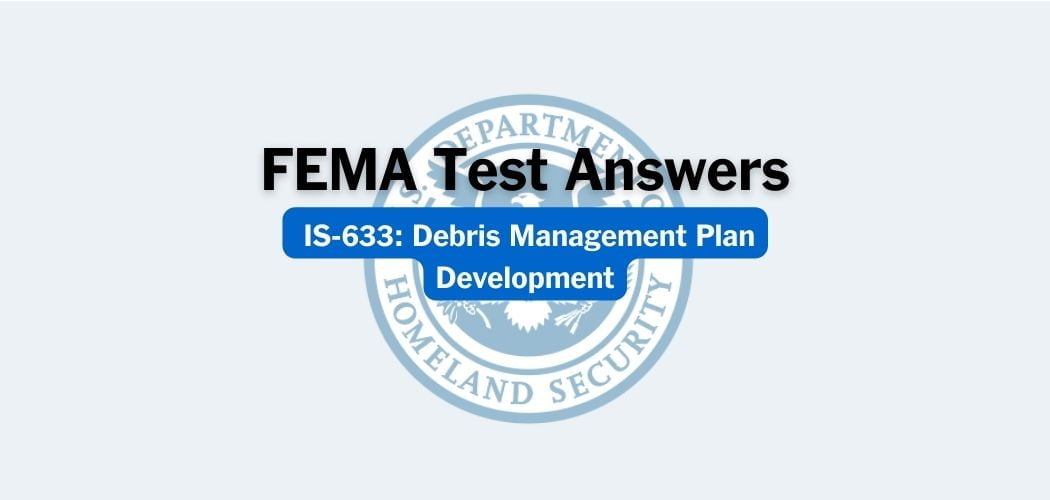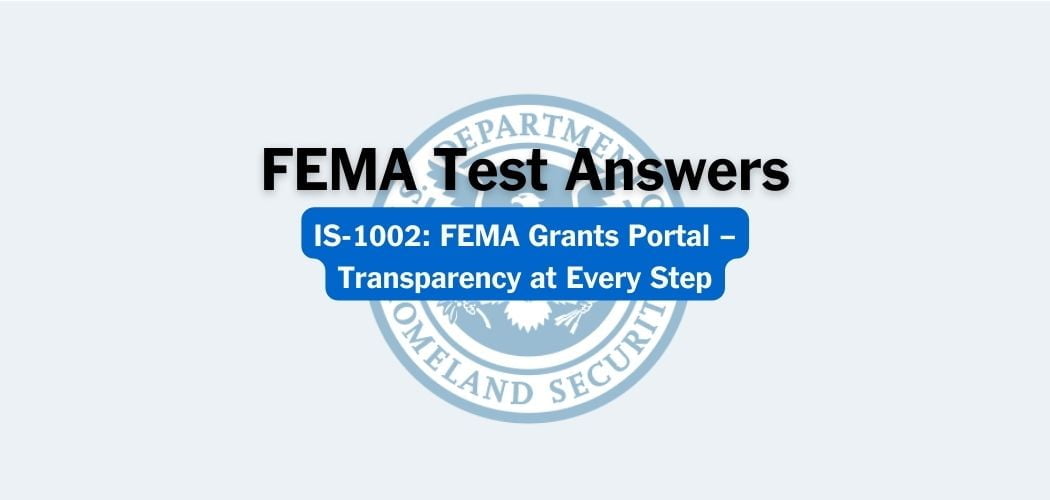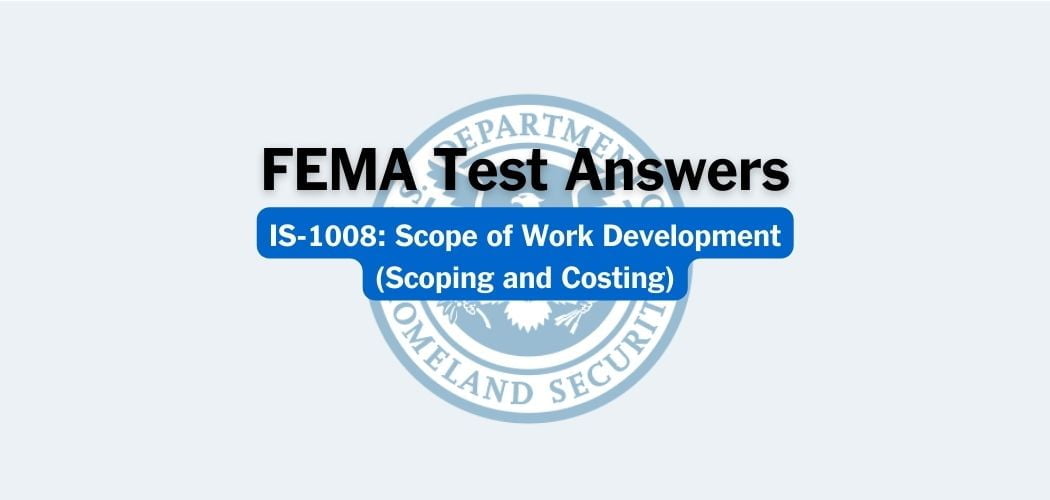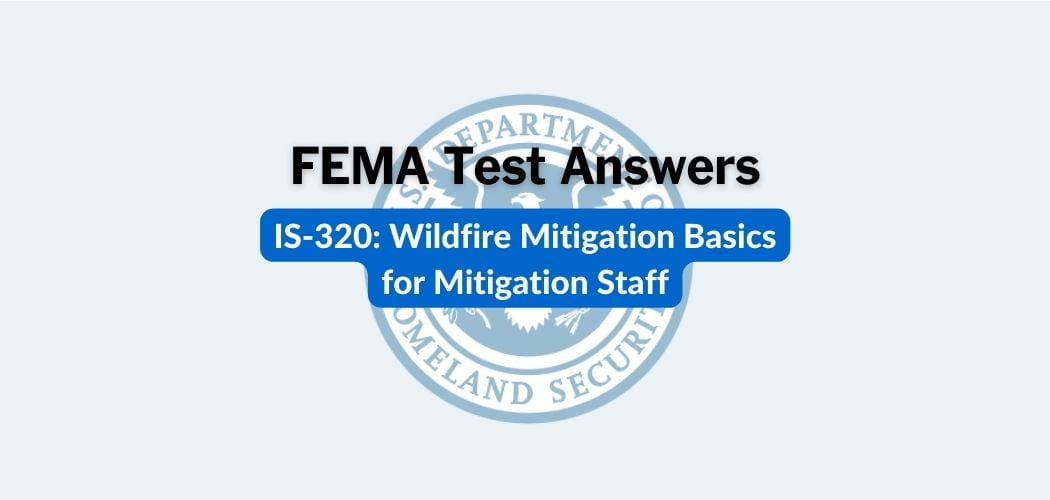Overview: The FEMA IS-505 course was published on 3/4/2016 to provide emergency management professionals and faith and community leaders active in disaster with the religious literacy and competency tools needed to learn how to effectively engage religious and cultural groups and their leaders throughout the disaster lifecycle.
Primary audience: FEMA IS-505 and its companion tip sheet resources have been developed with the University of Southern California Center for Religion and Civic Culture (CRCC) and the National Disaster Interfaith Network and is open to the general public.
FEMA IS-505 test answers
Each time that this test is loaded, you will receive a unique set of questions and answers. The test questions are scrambled to protect the integrity of the exam.
Question 1. When engaging religious leaders and communities, you should:
A. Avoid asking questions about needs, since FEMA can conduct these assessments on its own
B. Ask leaders to not talk to their congregations, since FEMA should be the only organization that is communicating with survivors
C. Prevent communities from choosing their representatives, since the government already has a structure in place
D. Dress appropriately and use correct titles since you are trying to exhibit religious literacy and competence✅
Question 2. Which of these is a basic understanding of the history, sacred texts, beliefs, rituals, and current manifestations of multiple faith traditions?
A. Religious Literacy✅
B. Religious Competency
Question 3. Why are force multipliers useful when engaging religious and cultural communities?
A. Force multipliers do not offer any assistance when engaging religious and cultural communities
B. Force multipliers ensure you deal with each affected person on a one-to-one basis
C. Force multipliers can reach multiple congregates and others more quickly than you would be able to on your own.✅
D. Force multipliers help identify neutral meeting places
Question 4. Which of these is not an asset that faith communities possess during a disaster?
A. Presence and Staying Power
B. Resources
C. Isolation✅
D. Programs
Question 5. When determining who you will need to contact as part of your engagement plan, ideally you should:
A. Start with the larger force multipliers before going to the individual congregations.✅
B. Start with the individual congregations before contacting larger organizations
C. Always start with the DHS Center
Question 6. When meeting with religious and community leaders as part of your engagement plan, you should:
A. Ensure that the process does not favor one community over another✅
B. Address only the community with the most members present
C. Hold the meeting only in a church, since other houses of worship tend to be smaller
D. Allow only one speaker to prevent mixed message
Question 7. When scheduling meetings, which of the following is correct?
A. You should plan to meet on Tuesdays, Wednesdays, and Thursdays, since Fridays through Sundays are set aside for prayers or other gatherings, and leaders typically take off on Mondays.✅
B. You should schedule meetings during periods of fasting to avoid mistakes regarding dietary laws.
C. You should schedule meetings on days designated for worship since someone will definitely be there.
D. You should plan to meet in a sacred space to ensure a quiet environment.
Question 8. How do force multipliers assist in your engagement plans?
A. Force multipliers help determine the organizational structure of local houses of worship
B. Force multipliers help assess your own personal biases or misconceptions
C. Force multipliers provide information about the disaster’s impact in terms of real numbers
D. Force multipliers help determine who to contact and in what sequence✅
Question 9. In terms of numbers, congregations are second only to retail stores and shops in the United States.
A. TRUE✅
B. FALSE
Question 10. To educate yourself about the local congregations and community, and how they may be able to assist, you should contact the Local emergency management department regarding existing faith community relationships.
A. TRUE✅
B. FALSE
Question 11. Faith and cultural communities bring a number of assets to the whole community. Which of these assets can be defined as space, people, money, capacities, logistics and national affiliates.
A. Networks
B. Resources✅
C. Mission to Serve
D. Presence and Staying Power
Question 12. When conducting door-to-door outreach, it’s safe to assume that the best-dressed person is the person you need to speak with.
A. TRUE✅
B. FALSE
Question 13. When considering dietary laws, which of the following best describes Kosher?
A. Followed by many Muslims, food sources include those meats that have been ritually slaughtered. However, certain meats, such as pork, are prohibited.✅
B. Followed by many Buddhist, Hindu, Jain, Seventh-day Adventist, and Sikh adherents, foods cannot contain gelatin, meat, meat byproducts, or lard.
C. Followed by most Orthodox Jews, Conservative Jews, and some Reform Jews, food animals include cows, sheep, goats, chickens, turkeys, ducks, and most fish. Shellfish and bottom-feeding fish are not to be eaten.
Question 14. Faith and cultural communities bring a number of assets to the whole community. Which of these assets can be described as the compassion to help people cope and recover?
A. Networks
B. Resources
C. Mission to Serve✅
D. Presence and Staying Power
Question 15. When asking for help from faith communities as part of your engagement plan, you should:
A. Impress upon the religious leaders that their refusal to help will be met with the full force of government
B. Choose the largest house of worship to hold your meeting to ensure there is enough room for everybody
C. Offer only what you are prepared to deliver✅
Question 16. Which of these is a symbol of Hinduism?
A. Crescent Moon
B. Star of David
C. Cross
D. Ganesh✅
Question 17. When meeting for the first time, you may need to engage in rituals or relationship building before discussing business, since not engaging in these customs may be considered rude, which will hurt your outreach efforts.
A. TRUE✅
B. FALSE
Question 18. Which of these terms refers to a group within a religion?
A. Social Service Organization
B. Denomination✅
C. Congregation
D. Federation
Question 19. When assessing a disaster’s impact, which of these resources would not be used?
A. PDAs
B. GIS maps from FEMA
C. GeoPlatform
D. Mapquest✅
Question 20. When greeting a religious or cultural leader, you should:
A. Avoid alternate greetings, such as Namaste
B. Initiate a hug
C. Initiate a handshake
D. Wait for the leader to initiate physical contact✅
Disaster Operations and Recovery Curriculum
| Course Code | Course Title |
|---|---|
| IS-288 | The Role of Voluntary Organizations in Emergency Management |
| IS-302 | Modular Emergency Radiological Response Transportation Training |
| IS-403 | Introduction to Individual Assistance (IA) |
| IS-505 | Concepts of Religious Literacy for Emergency Management |



